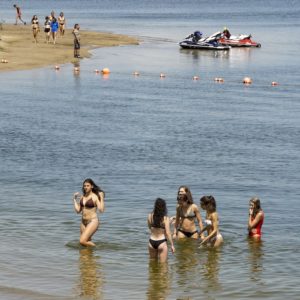Saving rare species in the South Okanagan Similkameen

What do Vancouverites and Burrowing Owls have in common?
Answer: They’re both facing a housing crisis.
The dry hills and forests of BC’s South Okanagan valley are the only habitat in the province suitable for burrowing owls. Sadly, they don’t live there anymore.
The species was declared expatriated – or locally extinct – in 1980.
In the South Okanagan-Similkameen Valley, 56 federally-listed species at risk are facing the same possibility. Thanks to habitat loss, climate change and development, there are more endangered animals and plants here than anywhere else in the province
Ready to sign our petition to create a National Park Reserve in the South Okanagan-Similkameen Valley? Great! Read on to find out who you’re protecting, and take the time to complete a government survey mentioning these species:

Photo: Dave Menke
The Flammulated Owl (Otus Flammeolus)
Classified under SARA as Schedule 1, Species of Special Concern
– Small owl with stubby, little ear tufts
– Large, black-button eyes
– Colourful, changing feather pattern – in the Ponderosa pine forests of the south, reddish hues predominate; in the northernmost parts of the region, grayish hues mixed with browns match the Douglas-fir trees around
– Habitat is threatened by agricultural activities and forest operations – not good for a creature that dwells in the woods

Photo: Peter Stevens
Lyall’s Mariposa Lily (Calochortus lyallii)
Classified under SARA as Schedule 1, Threatened Species
– White with a moon-shaped spot at the base of its petals – may bear a purple “crescent” on top
– Similar to the Three-spot Mariposa Lily (Calochortus apiculatus), except smaller
– Like other Mariposa lilies, it is characterized by a set of three petals interlaced with three sepals, and takes refuge in grassy meadows and dry hillsides
– Shade intolerant
– A very rare lily in the southern interior of British Columbia; in Canada, this lily species only occurs between the Similkameen river and the Okanagan Valley
– Several threats ranging from predators (insects/small mammals), invasive weeds, land alteration via coniferous tree planting, availability of pollinators and reproductive failure

Photo: Gilaman
The Great Basin Spadefoot Toad (Spea intermontana)
Classified under SARA as Schedule 1, Threatened Species
Medium-sized; 40-65 mm long
– Hues of olive, browns, light-gray shades; dark, raised patches on its back
– The soles of its hind feet are spiked with spades – used to burrow
– Possess “cat eyes” separated by a glandular bump in the middle (a.k.a. a “boss”)
– Resides in dry grasslands and open forests; needs a combination of terrestrial and aquatic habitat
– Habitat is threatened by agricultural activity and land development
Research on rare species in the South Okanagan was undertaken by our writing intern Blair Scott.


